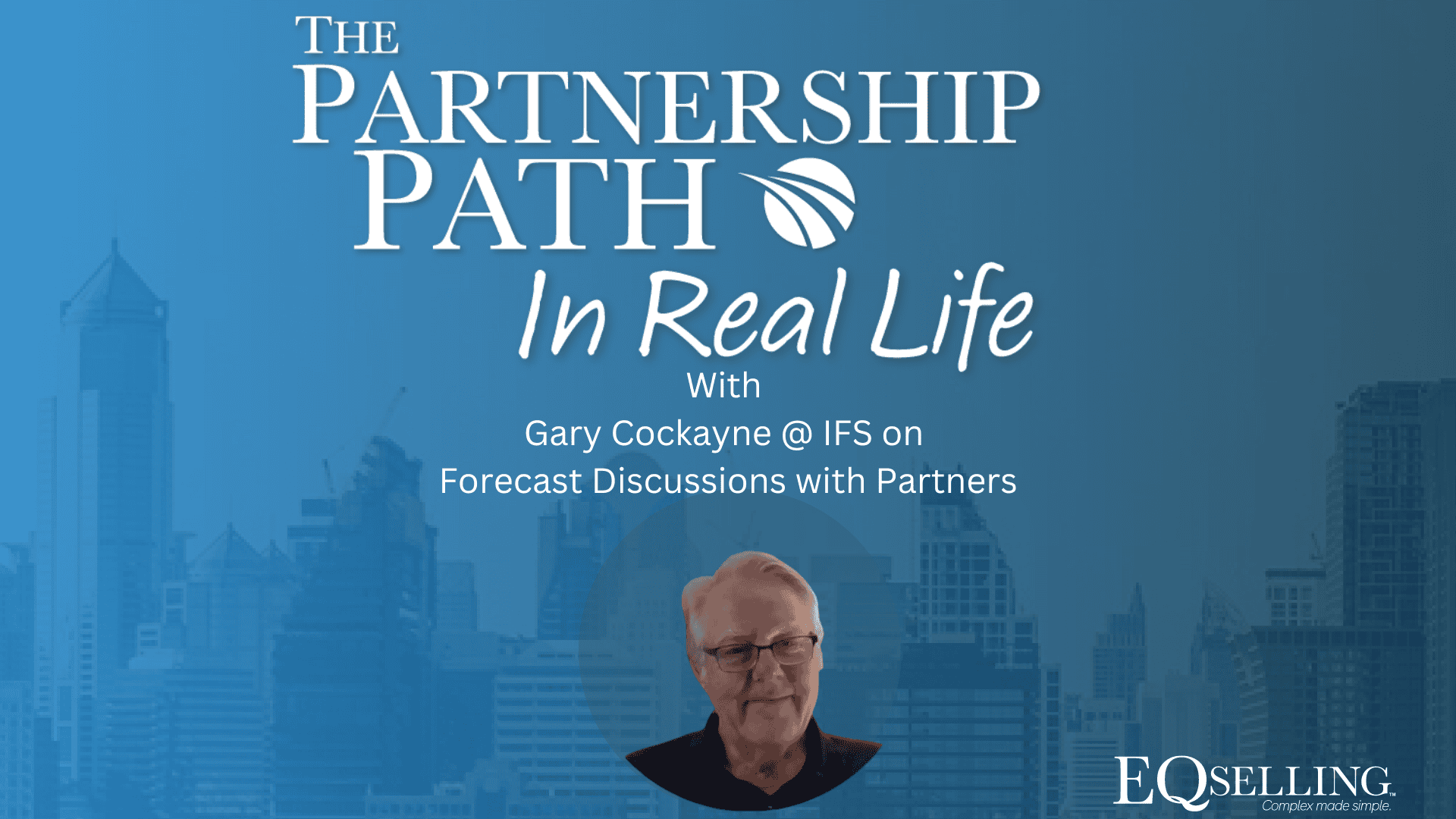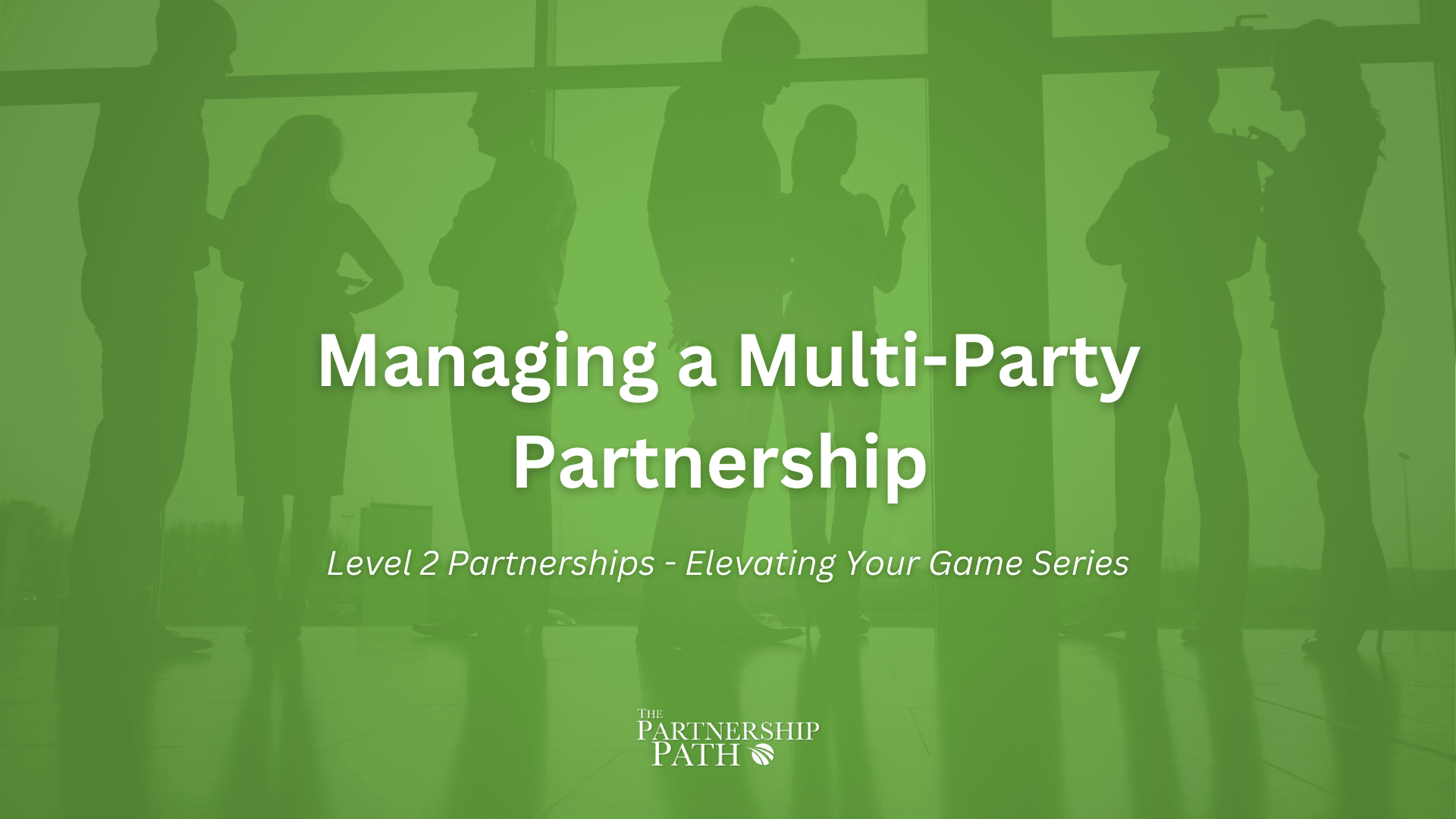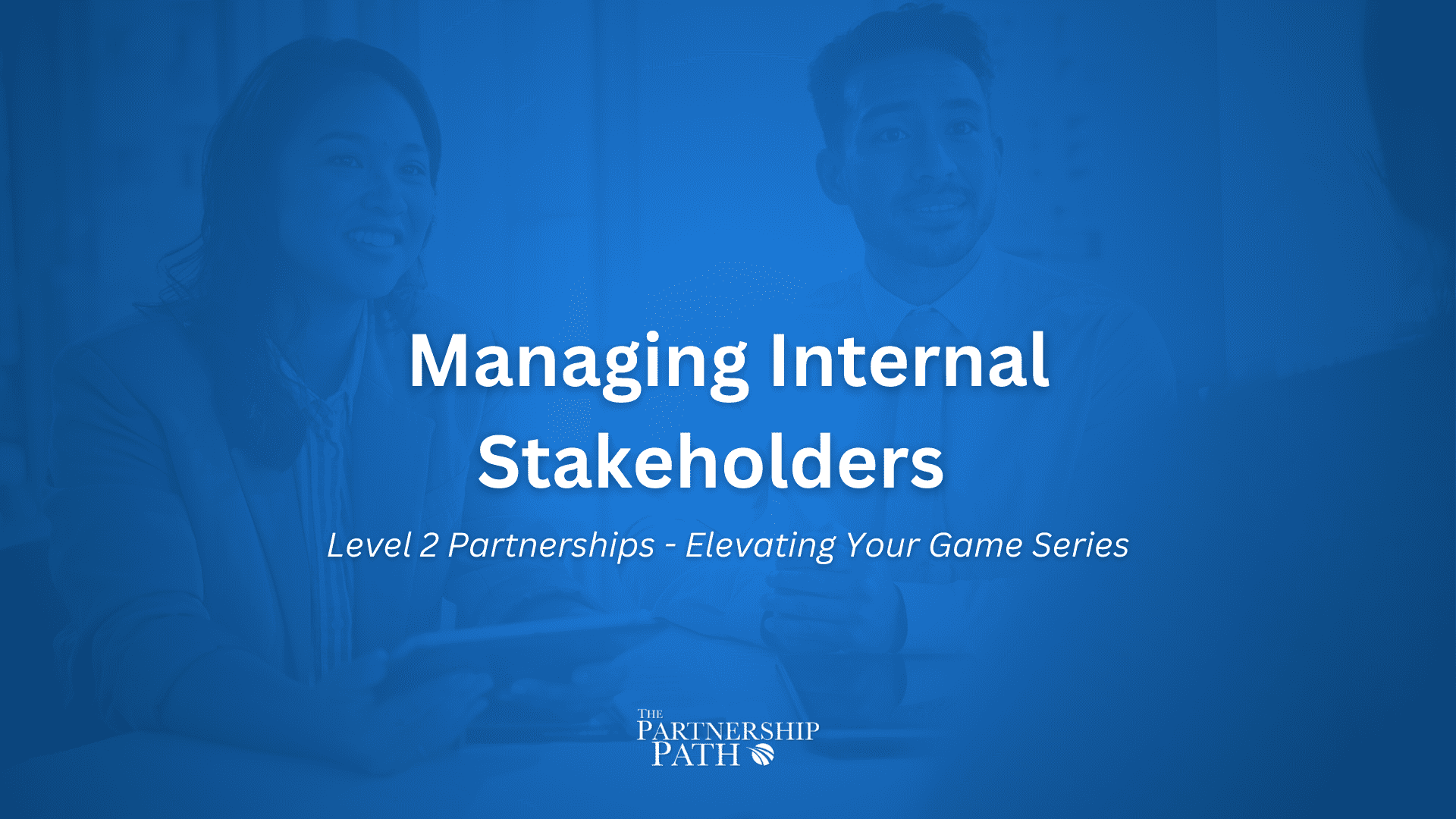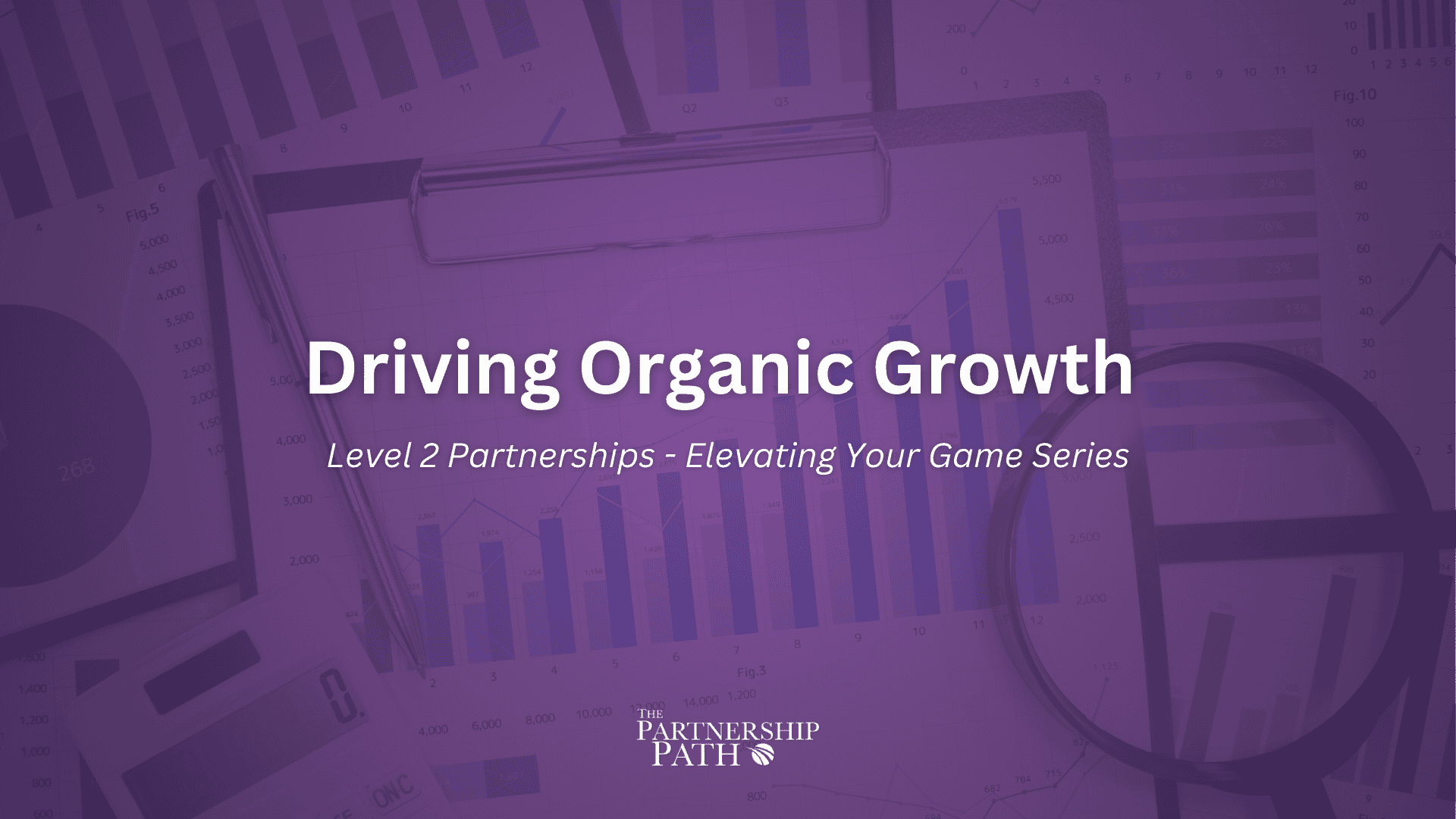Main Episode
Forecast Discussions With Partners
Episode Summary
In this episode of “The Partnership Path”, John Rudow and Toni Kent take a closer look at the ins and outs of forecasting in partnerships and channel management. If you’re in a partnership or sales role, you’ll find this discussion incredibly valuable. They break down why it’s crucial to keep pipeline and forecast discussions separate, how to navigate the risks involved, and the importance of setting accurate expectations. This episode is packed with practical tips that can really change the way you think about forecasting.
Transcript
John (00:02.646)
Alright Toni, I’m gonna try the new thing now. So hey, welcome to the Partnership Path. I’m John Rudow and I’m here with…
Toni (00:09.91)
I’m Toni.
Toni (00:14.646)
I’m Toni Kent. There you go. Always wanted to do that. Always wanted to be a news reader and do that little…
John (00:14.774)
We’re gonna get a TV show yet.
John (00:20.982)
Yeah, the little paper slam. Yeah, I like that. Yeah.
Toni (00:22.646)
Yeah, yeah, yeah, even though they use like, you know, tablets, they still have a bit of paper. Have a guess. You will have a view on this. What do you reckon is the number one thing that British people talk about?
John (00:27.926)
Yeah, teleprompters. Yeah. Yeah.
John (00:36.342)
Okay.
John (00:43.446)
Americans?
Toni (00:44.534)
No! Oh, I hate to disappoint you, John.
John (00:49.334)
I knew that would be like a classic American response, right? Would be, we are the center of everything, right? So you must talk about us.
Toni (00:52.118)
you
Toni (00:58.294)
No.
John (00:59.254)
I don’t know, pubs?
Toni (01:02.262)
I mean close, but it’s the weather, John. It’s the weather. Yeah. You shouldn’t name that. Yeah. Yeah.
John (01:06.134)
Oh, I should, you know what? I should have known that. Yeah. Is the weather bad? Is that why this is coming up? Are you in bad weather?
Toni (01:15.894)
Um, well, it’s hard to tell, uh, on a day -to -day basis. It’s funny. I heard this thing and it’s so true. If you, so if you were to walk past somebody like where I live, live in a little village, people do say hello to each other and you say hello and you remark on the weather and there is a rule. Like if you go, Oh, isn’t it lovely? The rule is you have to respond in the affirmative. Even if you think, Oh, it’s a bit cloudy. You have to say yes. Um.
John (01:32.278)
Of course.
John (01:39.51)
Of course.
Toni (01:44.47)
But you can never be sure. So there is a forecast. You see? Yes.
John (01:47.286)
No, it’s hard to forecast. Yeah. You are so smart because that’s our topic for today. And I bet you knew that. Yeah.
Toni (01:55.35)
It’s like I knew, it’s like I’d prepared. But I think there is that thing of when we get the forecast, I was speaking to a relative, they went, oh, you can’t trust it. Oh, you can’t trust what the Met Office says. So ties in nicely.
John (02:09.334)
Yeah. Yeah.
My wife and I have this almost daily, not argument, but this, like we each use a different weather app on our phones and they’re never the same. And what’s odd is they’re both getting weather from the same central data source, which is weather .com. But it’s fed to like ones like Apple weather and the other ones, I don’t know, whatever, some other, I don’t know what my wife uses. And it uses the same data, but gives you different forecasts.
Toni (02:23.958)
Oh, okay, interesting.
Toni (02:31.478)
Yeah, right.
Toni (02:38.39)
Mm -hmm.
John (02:43.862)
How’s that possible?
Toni (02:45.11)
How is that possible? It’s almost like working within a partnership management role, isn’t it? I thought we were talking about the same thing. So how does it work, John? How does it work when we talk about forecasts? Firstly, because last time we were recording, we talked about pipeline and you said, very different from a forecast. So.
John (02:52.182)
It kind of is.
John (03:11.318)
Yeah, yeah, I think this is a, this is super key that you differentiate these. And one of the things that I’m always pushing partner managers, channel managers to do is to separate the pipeline discussion from the forecast discussion. And that’s because they serve two really different purposes, right? Like the pipeline is about visibility into revenue and is my engine,
Toni (03:26.07)
Yeah.
Toni (03:30.55)
Mm.
Toni (03:36.822)
Mm -hmm.
John (03:40.182)
the partnership engine healthy. Forecast is about setting expectations, right? I mean, forecast is about this is what’s gonna happen when. Has nothing to do with trends or percentages to close. Like, none of that is, like, forecast is, no, this is a lot of art.
Toni (03:42.422)
Yeah.
Toni (03:50.742)
Hmm.
Toni (04:00.342)
Right.
John (04:06.454)
a little bit of science, but a lot of art of do I think this is going to happen and when. And so a lot of people like to do a forecast discussion and then they kind of have like a category of forecast that they call pipeline. Right. So they go like, well, tell me what’s you’re sure is going to close, what could close, and then let’s talk about pipeline.
Toni (04:06.582)
Yeah.
Toni (04:10.902)
Mm. Yeah.
Toni (04:23.35)
Right, okay.
Toni (04:28.118)
Yep.
John (04:31.222)
It just is such a confusing conversation because it’s two totally different things to really try and cover. Right. And so let’s set the pipeline stuff aside, including the, are you going to make the number? Right. Or are we going to make the number? Because that’s also not about forecasting. When we talk about goal achievement in a forecast discussion, all we’re doing is encouraging the people.
Toni (04:38.454)
Hmm.
Toni (04:44.278)
Yeah, okay.
John (04:58.582)
that we’re asking to set our expectations, we’re essentially asking them to lie. So they say, here’s how much I’m going to produce or here’s how much our partnership is going to produce. And you say, well, but your quota is blah, blah, or our goal is blah, which is translating into you need to change your forecast, which like that doesn’t make any sense. Yeah.
Toni (05:03.094)
Right.
Toni (05:09.91)
Mm -hmm.
Toni (05:17.43)
Yeah.
Toni (05:24.566)
to match the number. Yeah.
John (05:28.854)
You know, it’s kind of like, I think that some people think it’s like when your kid takes a cookie out of the cookie jar and you catch them and you say, how many cookies did you take? Oh, I only took one, dad. How many cookies did you take? And then they say, oh, I took two. Come on, how many? Right? And that’s not really what we want to, we do want to get to the truth, but.
Toni (05:37.974)
Mm -hmm.
Toni (05:56.918)
Yeah.
John (05:58.518)
In that particular forecast conversation, it’s not a good way to get there by essentially saying, I don’t think you’re telling me the truth. We should assume truth in a forecast discussion.
Toni (06:05.718)
Hmm.
Toni (06:10.934)
If you’re having a forecast discussion then, how far into the future are you looking?
John (06:18.166)
Yeah. I personally believe it is unrealistic to have a forecast discussion beyond 90 days. I think it’s reasonable to talk very seriously about 30 days, pretty seriously about 60 days, and then with a fair amount of risk at 90 days. And that is mostly around human nature, which is…
Toni (06:27.958)
Okay, right.
Toni (06:34.134)
Yeah.
Mm -hmm.
Toni (06:41.91)
Yeah.
John (06:48.661)
A lot of things can change in business and in people’s minds over 90 days. And so even though we think we have a really good sense of what’s happening, when we’re talking about whether Toni is still gonna feel really positive about everything we’ve done and put pen to paper 90 days from today, like there’s a lot that can happen between now and then that can change that. Yeah?
Toni (06:52.63)
Hmm. Hmm.
Toni (06:59.798)
Hmm.
Toni (07:03.606)
Mm.
Toni (07:12.118)
Yeah.
Toni (07:18.262)
Hmm, yeah, interesting. So how does that, how does that contrast with saying, yeah, I forecast we’re going to do $120 ,000 this month. So you’ve got to base that on knowledge of what deals definitely going to drop. But in this conversation, you’re not.
going into that level of detail.
John (07:51.03)
I think to some degree you are, right? I think forecasting what you’re saying is, so first off, I think your premise is the right place to start, which is I think this much is gonna close in this time period. But then I think you break it down into sort of categories of, here’s how much of that number I think has very little risk attached to it.
Toni (08:05.398)
Mm -hmm. Mm -hmm.
Toni (08:16.822)
Yeah.
John (08:18.518)
Here’s what portion of that number I think has some moderate risk attached to it. And here’s what I’m doing to address that risk. And then here’s how much of that number has a lot of risk. And so that gives the person collecting that the kind of information they need to combine it with all the other stuff that they’re getting and begin to do their own risk assessment.
Toni (08:26.422)
Yeah.
Toni (08:31.798)
Mmm.
Toni (08:42.198)
Hmm.
Hmm.
John (08:46.198)
Right? Because forecasting to some degree is also about risk assessment and mitigation. Right? And so I think that’s part of, obviously one of the challenges we have when we talk about forecasting with partners and partnerships is we all have different language. Right? I think in another episode we joked about a deal, oh, it’s a 60 % deal.
Toni (08:52.726)
Yeah.
Toni (09:06.102)
Yeah.
Toni (09:13.27)
Yeah, yeah, yeah, yeah, yeah.
John (09:13.654)
Or it’s a 40, right? Like, what does that even mean? It’s like there’s a 60 % chance they’re going to do it, or is it a 60 % chance they’re going to do it on this date? Or like, it gets really confusing. And so I think instead what we have to start to do is say, what’s the language we can use together? So how will we define our forecast categories? Right, I just use the example of very little risk.
Toni (09:24.758)
Yeah.
Toni (09:35.382)
Yeah.
Toni (09:39.414)
Yeah.
John (09:42.902)
moderate risk and a lot of risk. That’s one way to do it. We hear all kinds of categories, right? My commit number versus my upside number, right? We’ve all lived through a variety of those and lots of people have different kind of philosophies on that. But I think when I look across all of those, it all boils down to different risk levels. And that’s a more…
Toni (09:45.59)
Hmm.
Toni (09:52.086)
Yeah. Yeah.
Toni (09:58.71)
Yeah.
Toni (10:02.774)
Mmm.
Toni (10:08.31)
Yeah.
John (10:11.702)
kind of a conversation yo where you can both get on
Toni (10:21.59)
Yeah, and you kind of prompted me to think about in that forecasting scenario, there’s that awareness of being part of a bigger overall picture. So it could be, you know, that what you’re forecasting feels a little bit uncomfortable or painful to you. You know, the partnership may not quite deliver for this 30 day period, but that will feed into a broader, wider.
overall company number, overall margin or revenue number. And so as you were saying, being truthful is the best policy and using those kind of terms around risk and risk mitigation, you’re equipping people to make sensible decisions based on honest information. Yeah. Yeah. Yeah.
John (11:15.094)
Yeah. It’s, I think it’s a point that’s lost on a lot of people, which is most senior sales executives don’t lose their job by missing forecast. They actually lose their job by not being accurate in their forecast. So there’s lots of senior sales executives that miss their number and don’t
Toni (11:21.27)
Mm.
Toni (11:30.806)
Mm.
Toni (11:36.214)
Yeah. Yeah.
Toni (11:42.518)
Yeah.
John (11:44.182)
lose their job, but it’s because they properly set expectations that they were going to miss their number. And they did that with plenty of, you know, advance warning. And we need to be thinking that way in our partnership as well. Right. That’s why we remove the goal achievement from forecast discussions, because we don’t want to cloud that with the potential to fudge or lie or, you know,
Toni (11:45.526)
Yeah.
Toni (11:49.75)
Yeah. Yeah.
Toni (11:57.078)
Yeah.
Toni (12:01.622)
Yeah.
Toni (12:06.326)
Yeah.
John (12:13.846)
kind of maneuver, it’s all about accuracy. Can we accurately predict what’s going to happen when? And it’s, I don’t think I really had a good sense of this until I was running my own business, but like, like forecasting has very real, very painful consequences. Like it literally impacts people’s lives.
Toni (12:20.918)
Yeah.
Toni (12:29.014)
Hmm.
Toni (12:39.318)
Mm.
Toni (12:43.03)
Mm.
John (12:43.286)
Right? Like if your, if your forecast isn’t accurate and the company makes a bet based on your forecast, people lose their jobs over that. And like, until you really understand how forecast gets used to run a business, you don’t really appreciate, like I need to really focus on accuracy here, you know?
Toni (12:51.958)
Yeah.
Yeah.
Toni (13:05.91)
Yeah, yeah, I think that’s so that’s a really like, nice, like, you know, lesson to kind of learn wrap up and because I think people are so fearful of, like you say, well, this is the number. Yeah, so that’s the number that I’m going to do. People don’t like surprise people. Very, very senior people do not want a nasty surprise.
John (13:32.278)
Yep. Yep.
Toni (13:33.11)
So far better to set the expectation and say, I understand why this is not going to happen. What else can we do? Yeah. Great.
John (13:41.398)
Yeah, and I want to be clear that the vast majority of the coaching that I do around forecast accuracy is to leadership, not to the people producing the forecast, because they are doing whatever leadership encourages them to do. And partner and channel managers are in that same position with their partners. If we give partners a hard time about achieving their goal,
Toni (13:52.822)
Yeah.
Mm.
Toni (14:00.502)
Hmm.
Toni (14:05.718)
Mm -hmm.
John (14:11.19)
when we talk about forecasts, we’re encouraging them to give us inaccurate forecasts. And so we can’t blame the partner then for having an inaccurate forecast. That’s our fault. Same with a sales leader who has a team who, as you said, is, oh, I guess I better say, right? That’s nobody’s fault but the leaders. And so this is really about culture change. And I think as a channel manager, you have the ability to set the culture with your partner.
Toni (14:15.318)
Yeah.
Toni (14:19.99)
Yeah.
Toni (14:26.358)
Yeah.
Yeah.
Toni (14:38.038)
Yeah.
John (14:39.734)
of what does forecasting really mean, but that means being super clear on what it’s for, it’s for expectation setting, what matters, accuracy. And so we’re gonna separate that conversation from everything else we talk about so that it can be kind of done in a vacuum where people don’t feel weird or pressured or.
Toni (14:49.174)
Yeah.
Toni (14:58.838)
Yeah, that’s awesome. Well, I feel like I had a light bulb moment there, John, and I would love to know if any of the listeners had a light bulb moment too.
John (15:08.79)
Yeah.
Yeah, I would too because, and like I said, I mean, like this was a big light bulb for me in my career as well. We’re really getting a sense of what this really means and the implications of it. So I certainly hope there are some light bulb moments and I hope no one feels bad about that. Cause I think this is, this is one that a lot of people misunderstand. I’d love to hear people’s kind of evolution and progression through this forecast. I don’t know mindset of as they kind of think differently about it and.
Toni (15:16.566)
Mmm.
John (15:41.558)
or maybe they’ve already been thinking it this way and tell us how you got there. Would love to hear all that.
Toni (15:46.774)
Fantastic. And this kind of brings our little series to a close, doesn’t it? It feels like a nice place to close it. Yeah.
John (15:53.622)
It does. This is kind of the end of season two of our go -to -market together season. Yeah. Wow. It’s already the end of season two. You know why we’re calling it seasons, right? It’s because we want to be TV stars. So we’re not going to call it a series. It’s a season. Yeah.
Toni (15:59.158)
Yeah.
Toni (16:02.774)
Yeah, amazing.
Toni (16:08.374)
Alright, I thought you were going to relate. Yes, yes, that I started thinking about the weather, but that’s because I’m British, John.
John (16:18.934)
Well, whatever you think the weather is, I agree, because I’m learning that that’s the right answer.
Toni (16:22.166)
Yes, correct. Well, here’s to the next season, John. I really enjoyed recording this with you. Can’t wait to hear what the listeners think.
John (16:32.374)
Me too. Yeah, looking forward to it, Toni. Talk soon.
Toni (16:36.182)
Thanks, bye.
Key Takeaways
- Separate Pipeline from Forecast Discussions: Pipeline is about visibility into potential revenue, while forecasting is about setting expectations for what will happen and when. Mixing the two can lead to confusion and inaccurate predictions.
- Forecasting Involves Risk Assessment: A good forecast includes an evaluation of risks—what portion of the forecast has little, moderate, or high risk, and what actions are being taken to mitigate those risks.
- Accuracy is Crucial: Inaccurate forecasts can have serious consequences, impacting business decisions and people’s jobs. It’s essential to focus on setting realistic expectations and being honest about potential outcomes.




